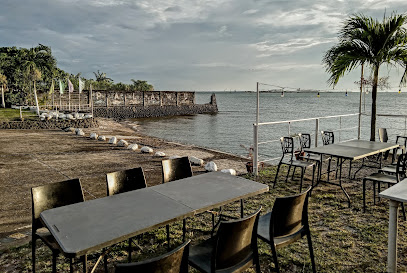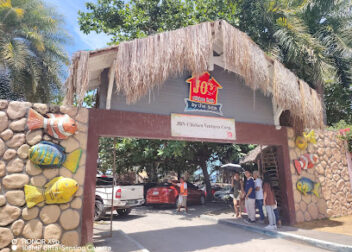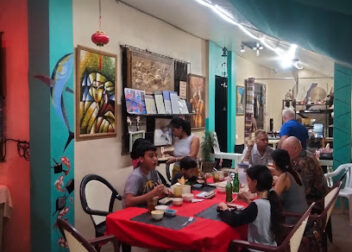Is Siquijor Island Safe for Tourists? Debunking the Myths
If you’re dreaming of a tropical getaway, Siquijor Island might have caught your eye with its pristine beaches and enchanting landscapes. But like many travelers, you may have stumbled upon some unsettling stories and myths about safety on the island. We get it—it’s only natural to have concerns when planning a trip to a place that has a bit of an enigmatic reputation. In this blog post, we’ll set the record straight and explore whether Siquijor is truly safe for tourists. Join us as we debunk common misconceptions and arm you with the information you need for a worry-free adventure in this stunning slice of paradise.
Understanding the Myths Surrounding Siquijor
Siquijor Island, often shrouded in mystique and folklore, has garnered a reputation that goes beyond its stunning beaches and vibrant marine life. The island has long been associated with myths of witchcraft, black magic, and various superstitions. These beliefs have shaped perceptions, especially among tourists, leading to a mix of fascination and fear. Let’s dive into some of these common myths, their historical context, and the reality behind them.
The Witchcraft Myth
One of the most prevalent myths surrounding Siquijor is its association with witchcraft. Locals, known as “mangkukulam” (witches), are believed to possess supernatural abilities to heal or harm others through spells. Although this idea may sound alarming, it’s crucial to understand the cultural roots behind it.
- Historical Context: The island has a rich history of folk healing, predominantly influenced by Spanish colonization. Local healers often utilize herbs and traditional remedies, which can sometimes lead to misunderstandings about their practices.
- Reality Check: While some locals do practice traditional healing, it’s more about herbal medicine than malevolent magic. Many visitors have found healing experiences through renowned local herbalists like Manghihilot Tita Lita, who blends ancient practices with modern wellness.
The Black Magic Belief
Alongside witchcraft, Siquijor is often depicted as a hotspot for black magic, with tales of curses and hexes swirling around. This notion has been fueled by stories passed down through generations.
- Cultural Significance: The fear of curses is prevalent in many cultures, and Siquijor is no exception. Superstitions may have emerged as a way to explain the unknown or to control social behaviors.
- Factual Insight: In reality, while some locals may believe in the power of curses, these practices are not widespread nor taken seriously by the majority. Instead, many locals focus on community and spiritual practices that promote harmony, such as Simbang Gabi celebrations, which highlight unity and faith.
Superstitions About Spirits
Siquijor is also known for its belief in supernatural beings, or “engkanto.” These spirits are thought to inhabit the island’s lush forests and pristine waters, leading to a plethora of superstitions.
- Local Customs: Many locals will perform rituals before entering the forest or water to avoid angering these spirits. For instance, offerings of rice or flowers might be left at the foot of a tree as a sign of respect.
- Reality Check: While these customs may seem strange to outsiders, they play a vital role in the island’s cultural identity. Visitors often enjoy participating in these rituals, gaining a deeper understanding of the island’s heritage.
The Tourist Perspective
Tourists often arrive with preconceived notions about Siquijor based on these myths, which can affect their experience. Here’s how to approach your trip with a clearer understanding:
- Embrace Local Culture: Instead of staying away due to fear, engage with local traditions. For example, participating in a pagtatawas (a form of divination) can provide insights into local beliefs and practices.
- Visit Local Healers: Experience the healing arts by visiting practitioners like Dr. Ramos, known for her herbal remedies, which can provide a unique perspective on the intersection of tradition and wellness.
Key Takeaways
| Myth | Reality |
|---|---|
| Siquijor is a witchcraft hotspot | Most practices are rooted in herbal healing and tradition. |
| Black magic is widely practiced | Black magic beliefs are not prevalent among the majority. |
| Spirits haunt every corner of the island | Superstitions exist, but they are part of a rich cultural heritage. |
Final Thoughts
Understanding these myths and their realities can enrich your experience on Siquijor Island. Balancing respect for local beliefs with an open mind will lead to a more fulfilling visit, allowing you to appreciate the island’s unique culture while enjoying its natural beauty. Whether you’re lounging on the beaches of Salagdoong or wandering through the mystical forest of Mount Bandilaan, Siquijor has much more to offer than what its myths suggest.
Current Safety Conditions on the Island
Siquijor Island, often referred to as the mystical island of the Philippines, combines stunning natural beauty with a laid-back atmosphere. It’s a popular destination for travelers seeking adventure, relaxation, and a dash of folklore. However, as with any travel destination, understanding the safety conditions is crucial for a pleasant visit. Let’s break down the current safety landscape on the island.
Crime Rates: What You Need to Know
When it comes to crime, Siquijor Island is generally considered safe. Reports indicate that serious crimes, such as violent assaults or thefts, are relatively rare. According to the Philippine National Police, the crime rate on Siquijor is significantly lower compared to larger cities like Cebu or Manila.
Recent Traveler Insights
Travelers who have recently visited Siquijor report feeling secure during their stay. Here are some insights based on recent reviews:
- Friendly Locals: Many tourists have shared their experiences of how warm and welcoming the locals are. This friendliness often translates into a protective attitude towards visitors.
- Low Incidence of Petty Crime: While petty theft can occur, travelers noted that incidents were minimal. A few reported losing personal items at crowded beaches, but these were isolated cases.
Crime Statistics Overview
| Type of Crime | Frequency (per 1,000 people) | Notes |
|---|---|---|
| Violent Crime | 0.3 | Rarely reported |
| Petty Theft | 1.2 | Mostly in crowded areas |
| Scams | 0.5 | Usually low-key; awareness helps |
Local Behavior Towards Tourists
One of the highlights of visiting Siquijor is the behavior of the locals. The island’s residents are known for their hospitality, often going out of their way to help tourists. Here’s what you can expect:
- Warm Interactions: Locals tend to greet visitors with smiles and are often eager to share stories about their culture and traditions.
- Helpful Attitude: If you need directions or recommendations, locals are generally willing to assist without expecting anything in return.
- Respect for Privacy: Tourists have reported that locals respect personal space and privacy, which contributes to a comfortable atmosphere for travelers.
Local Emergency Services and Resources
While Siquijor is a relatively safe destination, it’s essential to be aware of the local emergency services and resources available to tourists. Here’s a quick rundown:
Emergency Contacts
- Police: Dial 117 for any police assistance.
- Ambulance Services: Call 165 for medical emergencies.
- Fire Department: Reach out at 160 for fire-related emergencies.
Medical Facilities
- Siquijor Provincial Hospital: Located in the municipality of Siquijor, this facility provides basic medical services and is equipped for minor emergencies.
- Clinics: There are several private clinics on the island, such as the Siquijor Medical Center, which cater to minor ailments and injuries.
Safety Tips for Tourists
- Stay Alert: While the island is safe, always be mindful of your surroundings, especially in crowded places.
- Keep Valuables Secure: Use a reliable travel wallet, like the Pacsafe Carrysafe 100 GII Anti-Theft Sling Pack, to keep your valuables safe while exploring.
- Travel Insurance: Consider getting travel insurance, such as World Nomads, which covers medical emergencies and trip cancellations.
Local Resources
- Tourist Information Centers: Located in key areas such as San Juan and Siquijor Town, these centers offer maps, brochures, and guidance for safe travel on the island.
- Community Groups: Engage with community groups on social media platforms like Facebook to stay updated on local events and safety tips.
By being informed and taking sensible precautions, you can fully enjoy the enchanting experience that Siquijor Island has to offer while staying safe and secure.
Health Considerations for Traveling to Siquijor Island
When planning your trip to Siquijor Island, it’s essential to consider your health needs. This tropical paradise, known for its stunning beaches and vibrant culture, requires some forethought to ensure a safe and enjoyable experience.
Recommended Vaccinations
Before embarking on your journey, check with your healthcare provider about recommended vaccinations. While there are no mandatory vaccines for entering the Philippines, the following immunizations are typically advised:
- Hepatitis A: Protects against contaminated food and water.
- Typhoid: Recommended for travelers who may eat or drink outside major hotels and restaurants.
- Hepatitis B: Especially if you might have intimate contact with locals or get tattoos.
- Tetanus-Diphtheria: An important vaccine to keep up to date, particularly for outdoor activities.
- Rabies: Consider this vaccine if you plan to spend time around animals or engage in outdoor adventures.
Medical Facilities on Siquijor Island
Access to medical care in Siquijor is limited compared to larger cities. While there are local clinics and hospitals, they may not have the facilities or staff for serious medical conditions. Here are some key medical facilities on the island:
| Facility Name | Location | Services Offered |
|---|---|---|
| Siquijor Provincial Hospital | Larena | Basic healthcare services, emergency care |
| Maria Community Hospital | Maria | General medical services, outpatient care |
| Local clinics | Various locations | Minor injuries, consultations |
It’s wise to carry a basic first-aid kit with items like antiseptic wipes, band-aids, pain relievers like Paracetamol or Ibuprofen, and any personal medications. Brands such as Band-Aid and Neosporin are great to have on hand for minor cuts and scrapes.
Avoiding Common Travel-Related Illnesses
Traveling can sometimes expose you to illnesses that you might not encounter at home. Here’s how to stay healthy while enjoying Siquijor:
- Stay Hydrated: Drink plenty of bottled water. Brands like San Miguel Pure Water or Aquabest are widely available. Avoid tap water and ice made from it.
- Food Safety: Only eat at reputable restaurants. Look for places that are busy with locals, as this often indicates good hygiene. If you’re unsure, stick to cooked foods and avoid street vendors, especially for raw or undercooked items.
- Mosquito Protection: Mosquito-borne illnesses like dengue fever are a concern in tropical regions. Use insect repellent containing DEET, such as OFF! Deep Woods, and wear long sleeves and pants during dusk and dawn when mosquitoes are most active.
Outdoor Safety Tips
Siquijor offers fantastic outdoor activities, from snorkeling in crystal-clear waters to hiking through lush landscapes. However, staying safe is crucial. Here are some tips:
Snorkeling Safety
- Choose Reputable Operators: When booking snorkeling excursions, select well-reviewed companies like Turtle Diving Siquijor. They prioritize safety and provide quality equipment.
- Use Proper Gear: Ensure you have a well-fitting mask and snorkel. Brands like Cressi F1 Snorkeling Set are popular for comfort and clarity. Also, wear a rash guard to protect against sunburn and jellyfish stings.
Hiking Safety
- Research Trails: Popular spots like the Mount Bandilaan National Park have well-marked trails, but always check current trail conditions. Websites like AllTrails provide user reviews and tips.
- Pack Essential Gear: Bring sturdy hiking shoes like Merrell Moab 2 Ventilator for traction and comfort. Also, carry a small backpack with essentials: water, snacks, a first-aid kit, sunscreen, and a portable charger for your phone.
- Travel in Groups: It’s safer and more enjoyable to hike with friends. If you’re solo, consider joining a local hiking group or hiring a guide.
Emergency Contacts
Before you go, jot down important local contacts for emergencies:
- Local Hospital: Siquijor Provincial Hospital – +63 35 481 9103
- Tourist Police: +63 917 711 1111
- Emergency Services: 911
By taking these health and safety precautions, you can enjoy the beauty and charm of Siquijor Island without worry!
Final Thoughts on Siquijor’s Safety for Travelers
In conclusion, Siquijor Island is much more than the myths suggest; it’s a safe and inviting destination for travelers eager to explore its beauty and culture. By staying informed, respecting local traditions, and taking standard safety measures, visitors can fully enjoy all the experiences this enchanting island has to offer. So, pack your bags, keep an open mind, and get ready to make some unforgettable memories in Siquijor!



